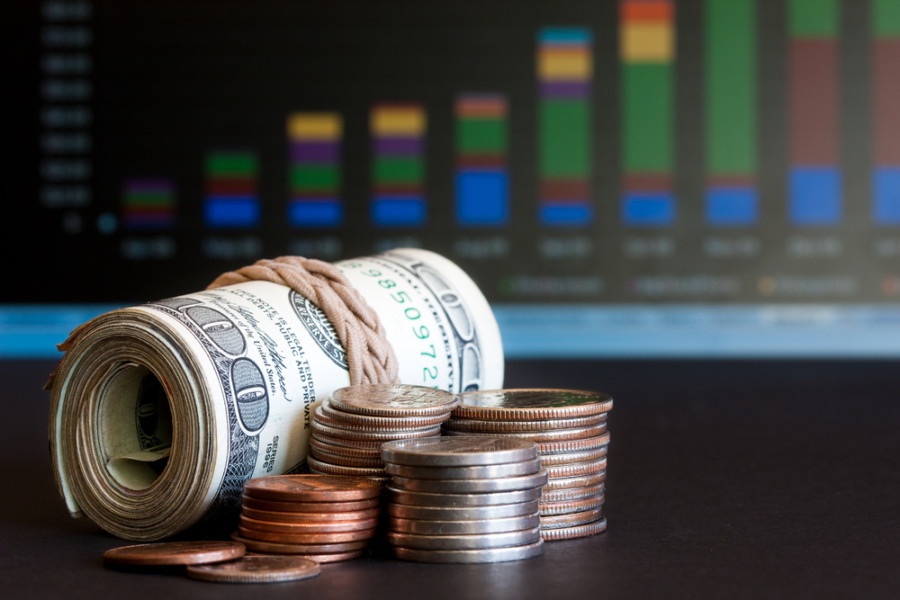You should have a clear and consistent money management plan when trading, like any activity that involves risk. Without it, I would try to build a house without laying the foundation first. Many traders miss out on an important aspect of trading because there is more to consider than counting money. Then you’ll realize that making a plan is just as important as sticking to it.
it’s ya
Building a coherent plan starts with 3 questions:
- Overall how much risk are you willing to take?
- How much do you want to risk per day?
- How much can you risk per trade?
Risk management trading system
Answering the first question is reasonably easy. For example, if you have £5000 and put your trading skills to the test, this is how much you are willing to risk. However, out of the £5000 you start with, you can limit your maximum loss to £2500, which is reasonable. It is best to stop if your trading only causes losses and you have lost 50% of your capital. Take a step back and figure out what’s wrong. At this point, it should seem clear that something is wrong with your trading plan and you need to take stock.

Your second question is a bit trickier and takes a bit more thought. How often do you think about trading? Looking at the example above, how quickly can you risk losing 2,500 pounds before stopping? My guess is that you shouldn’t risk burning your capital within 2-4 weeks. This is 10-20 trading days. So you have to think along the lines of 1/10 to 1/20 of your daily capital. This means you risk between £250 and £125 per day.
Are you an ‘active’ trader?
This assumes that you trade actively, or trade at least once a day. What if I want to trade only occasionally? Perhaps it is on the back of an idea you have or a recent news line. Suppose you can trade every 2-3 days. In this case, it can be very tempting to think that you can add up your risk-free cash on a no-trade day. So “you haven’t traded in 2 days, so you can risk £750 or £375 in one trade today”. In practice this increases the risk you take, and you can get £2250 lower with just 3 bad deals. Yes, it may still take 2 weeks to accumulate this loss, but it can happen very easily if you only take 3 wrong trades. So even in this case, it’s best to keep it at 1/10 or 1/20 per transaction. Something closer to a day or 1/20 if it’s going in one trade.
This allows us to answer the last question. How much risk can you take per trade? This depends on how many times you want to trade per day and how much time you spend in front of a screen. You may have enough time to trade only once per day, in which case it is recommended that all single trades (and daily risk) be at most 1/20th of your risk capital. £125 for the above.
Let’s say you decide to risk £200 a day trading binary options and you plan to trade every day. You can put all of this into one trade and see if it’s successful. This is ultimately the most risky route. It depends on how much time you can spend trading, but I would break the daily number you decide on into 2-4 trades. You don’t necessarily have to make all of them, but it’s a good idea to give them a chance once a day. If you have the time, it might be more rewarding to split your daily risk scales across various trades.
Broker with low minimum trade size
Applying money management with binaries
What I like most about binary options trading is that the risk is well controlled. You know what your maximum risk per trade is when you place a trade, which is simply the option cost. But on a particularly bad day, human emotions can come into play. As seen above, if you lose your daily risk amount, you basically have to turn off your screen and wait for tomorrow.
This is probably the most difficult task. As a trader you would think you could get it right, one more try is all you need. But we have to look at it this way. You have a daily risk limit of £210, which is split into 3 trades of £70 each. If you’ve gone through all three wrongs, you won’t get the fourth one simply because of exhaustion or emotion-based trading.
You may or may not be in a state of emotional equilibrium at this point. From a money perspective, you can get the best of 90% or £63 back if you get £210 down and another deal. You put down another £70 for a total loss of £280 per day.
It can just make you feel bad, and more dangerously, it can start a very dangerous spiral with no more limits on how much you can lose per day or gun. Limits are a great way to encourage discipline in your trading.
You can also add more rules or restrictions. Taking the example above (splitting 210 pounds per day into 3 trades), you can add your rule. 2 consecutive losses and I’m out for the day. For example, starting the day with 3 wins in a row is no reason why you can’t win. But now, let’s say you lose the next two things.
Now you can still walk away with a profit for the day. This loss-and-loss rule protects your gains over the day and limits what you gain as well as what you lose within your daily risk limit. If you keep trading, you can make two more winning trades but you can make two more losing trades. The “2 straight trade losses = out” rule can help protect your winnings. Remember that one of the most important concepts is capital preservation and you can trade again tomorrow.
Rules like these may make sense for some investors, but not others, but three fundamental questions remain. One thing every single broker can agree on is that money management is paramount to trading success.
percent rule
Another popular strategy for money management is to risk only a percentage of your total invested funds. One of the advantages of this system is that trades grow in size after a series of successful trades and contract in case of losses.
The percent rule represents a very simple system. In a single transaction, only a specific percentage of the fund is exposed to risk. This would be almost 5% or more. Sustainable, low-risk strategies allow you to invest only 1% of your total funds.
The rules aren’t strict, but as often as you don’t need to calculate percentages before every trade – you “set a baseline”. So someone with £1000 in trading funds might decide to start trading with £20 per trade. This represents 2% of your funds at risk per trade. Until the fund reaches £1200 (or perhaps much setbacks and reaches £900), the £20 trade size may hold. At this point you can resize your trades.
So no calculations go through, but more of a measure for the next trading period. Some traders re-baseline once a month, others re-baseline at the end of the trading day. Mechanisms are not the heart of the system, the main point is that you risk only a small percentage of your total balance per transaction.
Calculator table
To help you use the percent rule trade size system, below is a quick table showing ‘at a glance’ trade sizes along with various invested fund amounts and percentages. Those who want to take on less risk per trade will want to use smaller percentages, and those who want to take more risks will use larger percentages. Fund size can be multiplied as appropriate, just like percentages.
| 1% | 2% | 5% | |
| full balance | |||
| £ 100 | £ 1 | £ 2 | £ 5 |
| £ 250 | £ 2.5 | £ 5 | £ 12.5 |
| £ 500 | £ 5 | £ 10 | £ 25 |
| £ 1000 | £ 10 | £ 20 | £ 50 |
The calculator above shows the importance of checking the minimum trade size from a potential broker if you are short on investment funds. Traders can take more risk per trade because they risk a greater than desired percentage of their total bankroll due to minimal trades.








